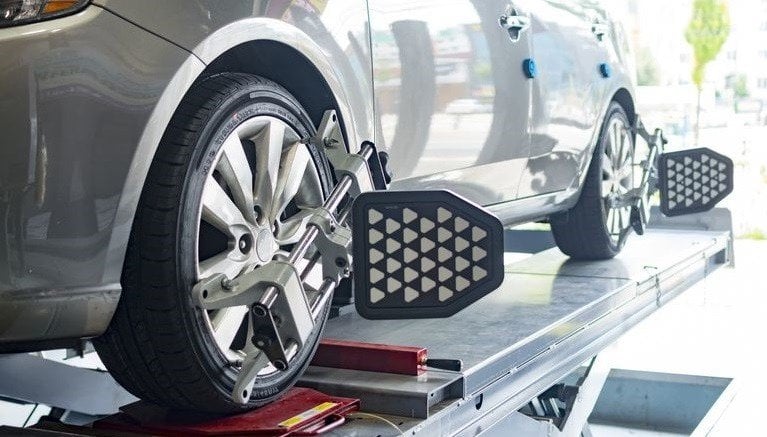Wheel Alignment FAQs
Wheel Alignment FAQs
Posted on June 1, 2020
Wheel alignment, or tire alignment, is a bit of a misnomer as an alignment is an adjustment to a vehicle's suspension, not the tires or wheels themselves. A vehicle's suspension connects a vehicle to its wheels. An alignment adjusts the suspension components to bring the wheels and tires into proper contact with the road, which helps to optimize vehicle handling, performance, and tire wear.
How to Know If you Need a Wheel Alignment

There are many vehicle inconsistencies that can point to a vehicle needing an alignment. The most notable of these signs is that the steering wheel is off center. When driving straight, the 12 o'clock position of the steering wheel should be dead center. If it is sitting to the left or right of center, the wheels might need aligned.
In connection with an off-center steering wheel, a vehicle that needs an alignment will often pull left or right. If a vehicle is driving straight, take your hands off the steering wheel. If the car immediately starts drifting to the left or right, it needs an alignment. This test should be done with caution (and no other cars around!).
A misalignment can also present itself in the pulsing and shaking of the steering wheel. This will occur on even the smoothest surfaces. In addition, uneven wear on tires can be an indicator that a vehicle needs to be aligned. Uneven wear can occur on all tires, only a few, or just one.
Front End Alignment vs. 4 Wheel Alignment
A front (or two-wheel) or four-wheel alignment is dependent upon vehicle type. Not every vehicle has rear adjustability, so some vehicles are limited to front end alignments. A front-end alignment will include the adjustment of a camber, toe, and caster. However, if a vehicle has front and rear adjustability, then a four-wheel alignment should be conducted. This is typically required on all-wheel-drive models that have independent suspensions
A 4-wheel (or AWD) wheel alignment is especially important in Calgary to ensure that a vehicle has superior handling, especially in poor weather conditions. At many service centres, the price difference between a front end and four-wheel alignment is not significant.
How Often to Have a Vehicle Aligned
There is no hard and fast rule on how often a vehicle should be aligned or checked for alignment. It is easy to tell when a vehicle is out of alignment, and different driving conditions will call for more frequent alignments. For instance, dirt roads or poorly maintained roads with potholes will cause a vehicle to come out of alignment more often. On average, the recommendation is to have a vehicle aligned every two or three years.
Benefits of a Wheel Alignment
A tire or wheel alignment ensures optimal drivability of a vehicle. It also extends the life of your tires, increases fuel economy, and ensures smooth handling. It is a simple process that is not expensive and takes less than an hour, so there is no reason to put off alignment and cause additional issues.
